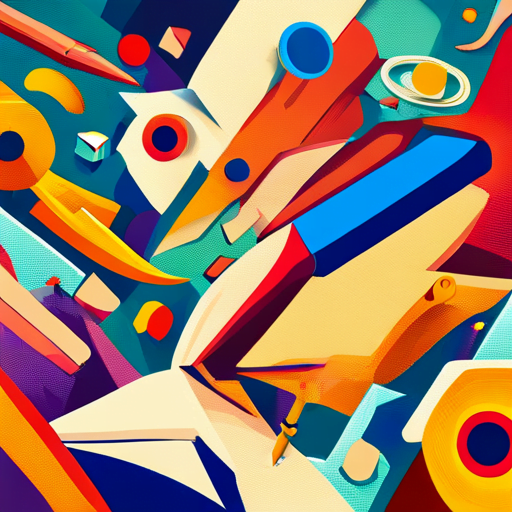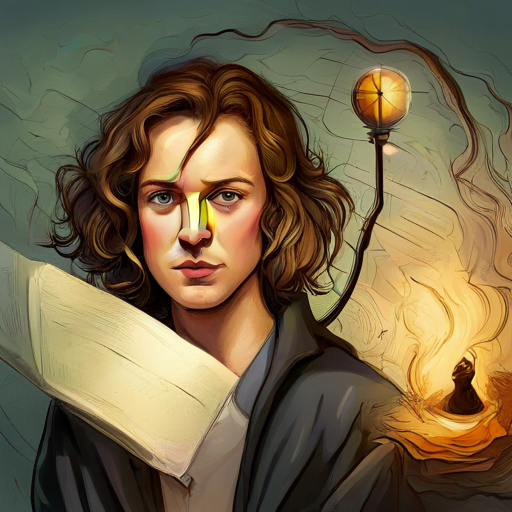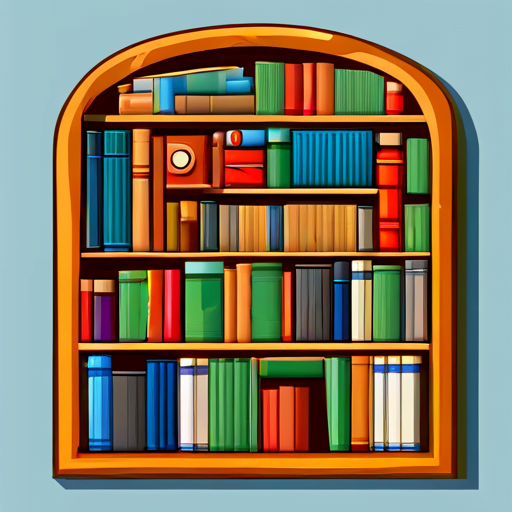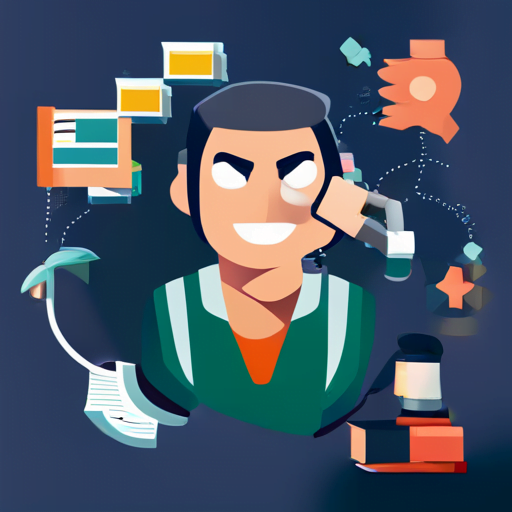Are you struggling to understand the deeper meaning behind the books you’re reading? Do you find yourself lost in the sea of metaphors, similes, and allusions? Fear not, because understanding literary devices is the key to unlocking the hidden messages in literature.
Literary devices are the tools that writers use to convey their ideas and emotions to the reader. They allow the writer to create a deeper and more meaningful experience for the reader, by adding layers of symbolism, imagery, and figurative language.
In this article, we will explore the most common literary devices, their significance, and how to analyze and interpret them. With this knowledge, you’ll be able to appreciate literature on a whole new level.
Table of Contents
Introduction to Literary Devices

You’re about to dive into the world of crafting beautiful stories with tools that add depth and meaning to your writing. Literary devices are the key to unlocking the true potential of your storytelling abilities.
From metaphors to allusions, these devices allow you to express complex ideas and emotions in a way that resonates with your readers. Literary devices are essentially techniques that writers use to enhance their writing.
They can be used to create vivid imagery, evoke emotions, and add layers of meaning to a text. Understanding these devices is crucial to becoming a successful writer.
By mastering literary devices, you can take your writing to the next level and create stories that truly captivate your readers. So, get ready to explore the world of literary devices and discover how they can help you craft beautiful stories.
Common Literary Devices and Their Significance

You’re about to dive into some of the most common and significant literary devices used by writers. These devices include imagery, metaphor and simile, symbolism, foreshadowing, irony, and allusion.
Each of these techniques serves a unique purpose in creating a more impactful and memorable story. So, get ready to explore how these literary devices can help you become a more skilled and effective writer.
Imagery
In the section on Imagery, we’ll explore how authors paint vivid mental pictures with words. Imagery is a literary device that appeals to our senses by creating mental images or sensory impressions through language.
It’s like a movie playing in our minds as we read a book, and it adds depth and richness to the story. Authors use imagery to create a more immersive reading experience. They use descriptive language to paint pictures in our minds, allowing us to see, hear, feel, taste, and smell what is happening in the story.
For example, an author might describe the scent of freshly cut grass, the sound of waves crashing against the shore, or the taste of a ripe, juicy peach. By using imagery, authors can evoke emotions and create a deeper connection between the reader and the story.
Metaphor and Simile
You’ll feel like you’re walking through a field of blooming flowers when the author uses metaphors and similes to compare the protagonist’s emotions to the colors and textures of nature.
Metaphors and similes are two literary devices that are commonly used in literature to create vivid and powerful imagery. A metaphor is a figure of speech that makes a comparison between two things that are unrelated but share common characteristics. For example, “her heart’s a rose” is a metaphor that compares the protagonist’s emotions to the beauty and fragility of a rose.
On the other hand, a simile is a figure of speech that compares two things using “like” or “as”. For example, “her smile was as bright as the sun” is a simile that compares the protagonist’s smile to the brightness and warmth of the sun.
Metaphors and similes are often used to create visual and sensory descriptions that help the reader to better understand the emotions and experiences of the characters in a story. The use of metaphors and similes can make the story more engaging and can help the reader to connect with the characters on a deeper level.
Symbolism
As you read, symbols will pop off the page, painting a picture of deeper meaning and hidden messages throughout the story. Symbolism is a literary device that uses a person, place, object, or action to represent something beyond its literal meaning. These symbols can be subtle or obvious and are used to add another layer of depth to the story.
For example, in F. Scott Fitzgerald’s ‘The Great Gatsby,’ the green light that Gatsby obsesses over represents his dream of being with Daisy and his pursuit of the American Dream. The eyes of Doctor T. J. Eckleburg on the billboard in the Valley of Ashes symbolize the loss of morality and the corruption of society.
Understanding these symbols not only adds to the enjoyment of the story but also helps to uncover the themes and messages that the author’s trying to convey.
Foreshadowing
Now that you’ve got a better understanding of symbolism, it’s time to delve into another important literary device: foreshadowing.
This technique is used by writers to give readers a hint or clue about what’s to come later in the story. It can be a subtle hint or a more obvious one, but either way, foreshadowing is a powerful tool that can keep readers engaged and on the edge of their seats.
Foreshadowing can take many forms, including a character’s behavior, dialogue, or even the weather. For example, if a character suddenly becomes very agitated or nervous, it could foreshadow that something bad is about to happen. Similarly, if a character mentions a specific object or event, it could be a clue that it will play a significant role later in the story.
By using foreshadowing, authors can create tension and anticipation, which keeps readers engaged and invested in the story. So keep an eye out for any hints or clues that might be lurking in the text – they could be key to unlocking the story’s secrets.
Irony
You may think you know the outcome of the story, but the author will surprise you with unexpected twists and turns through the use of irony. Irony involves a contradiction between what is expected and what actually happens, and it can be used to create suspense, add humor, or reveal a deeper meaning in the story.
There are three types of irony: verbal, situational, and dramatic. Verbal irony is when a character says something but means the opposite. Situational irony is when the outcome of a situation is the opposite of what was expected. Dramatic irony is when the audience knows something that the characters do not.
Irony can also be used to create a sense of irony, where the contrast between what is expected and what actually happens creates a sense of unease or discomfort. By using irony, the author can create a more complex and engaging story that keeps the reader guessing until the very end.
Allusion
You’ll be amazed at how many references to other famous works you’ll find when you learn about allusion in literature. Allusion is a literary device that refers to a person, place, thing, or event from another piece of literature or from history. This reference can be direct or subtle, and it adds depth and meaning to the text.
Allusions can be found in many forms of literature, including novels, poetry, and even song lyrics.
For example, in F. Scott Fitzgerald’s ‘The Great Gatsby,’ the title character is compared to the mythological figure of Icarus, who flew too close to the sun and fell to his death. This allusion highlights Gatsby’s tragic flaw of striving for an unattainable dream.
By using allusion, Fitzgerald adds complexity and symbolism to his story, making it more engaging and thought-provoking for the reader.
Examples of Literary Devices in Popular Literature

Take a journey through popular literature and experience the power of literary tools that bring stories to life.
One of the most commonly used literary devices is foreshadowing. This tool hints at what is to come in the story, creating a sense of anticipation and adding depth to the plot. In J.K. Rowling’s ‘Harry Potter and the Philosopher’s Stone,’ the author uses foreshadowing to hint at the true identity of the mysterious character, Nicolas Flamel. Throughout the book, the characters come across the name Flamel multiple times, but it isn’t until the end that they discover he is the creator of the Philosopher’s Stone. This use of foreshadowing not only adds to the mystery and intrigue of the story but also helps to tie up loose ends and provide closure for the reader.
Another popular literary device is symbolism. This tool uses objects or actions to represent abstract ideas and themes within the story. In F. Scott Fitzgerald’s ‘The Great Gatsby,’ the green light across the bay symbolizes Gatsby’s longing for his lost love, Daisy. The light is always just out of reach, representing the unattainable nature of Gatsby’s desires. Additionally, the valley of ashes represents the moral decay of society during the 1920s.
This use of symbolism adds depth and complexity to the story, allowing the reader to delve deeper into the themes and ideas presented.
How to Analyze and Interpret Literary Devices

As you delve into the world of analyzing and interpreting literary tools, you’ll discover the magic of unraveling hidden meanings and uncovering the layers of depth that literary devices bring to a story. It’s important to keep in mind that literary devices are not just random elements thrown into a work of literature; they serve a specific purpose in enhancing the overall message and impact of the story. Therefore, it’s crucial to approach the analysis of literary devices with a careful and critical eye.
When analyzing a literary device, start by identifying the type of device being used and its purpose in the context of the story. Look for patterns or repetitions of the device throughout the work and consider how it contributes to the themes and messages being conveyed.
Additionally, pay attention to the language being used and how it creates a specific tone or mood. By examining the literary devices used in a work, you can gain a deeper understanding of the author’s intentions and the significance of the story as a whole.
Frequently Asked Questions
How do literary devices differ from literary techniques?
When it comes to literature, you may have heard the terms ‘literary devices’ and ‘literary techniques’ used interchangeably. However, there is a subtle difference between the two.
Literary devices refer to specific techniques or structures used by authors to convey their message, while literary techniques are broader and include the entire range of tools an author uses to create meaning in their work.
For example, imagery, metaphor, and symbolism are all examples of literary devices, while characterization, point of view, and plot structure are examples of literary techniques.
Understanding the distinction between the two can help you better analyze and appreciate the craft of writing.
Can literary devices be used in non-fiction writing?
Did you know that literary devices can also be used in non-fiction writing? These devices are not limited to just fiction or poetry.
For example, you can use metaphors, similes, and personification in your news articles, speeches, or even scientific research papers. Using literary devices in non-fiction writing can help convey complex ideas in a more engaging and memorable way.
It can also make your writing more creative and interesting, which can help captivate your audience’s attention. So don’t be afraid to experiment and use literary devices in your non-fiction writing to make it more impactful and memorable.
Are there any disadvantages to using too many literary devices in a piece of writing?
If you’re using too many literary devices in your writing, it may become overwhelming and distracting for the reader.
While literary devices can enhance and add depth to your writing, overusing them can make your writing seem forced and contrived.
Additionally, too many literary devices can take away from the clarity and simplicity of your message.
It’s important to use literary devices strategically and purposefully, rather than simply for the sake of using them.
Remember to always keep your audience in mind and ensure that your writing is clear, concise, and effective.
How have literary devices evolved over time?
As a writer, you may be curious about how literary devices have changed over time.
From the early days of storytelling to modern literature, literary devices have evolved to become more complex and nuanced.
In ancient times, stories were often passed down orally, and literary devices were used to aid in memorization and make the story more engaging.
As writing became more prevalent, literary devices were used to add depth and meaning to the text.
Today, literary devices are used to create complex narratives, explore themes, and add emotional impact to a story.
From the humble beginnings of oral storytelling to the complex literary devices of modern literature, the evolution of literary devices has greatly impacted the way we tell stories.
Are there cultural differences in the use and interpretation of literary devices?
If you’re curious about the impact of cultural differences on literary devices, you might be wondering whether there are variations in the use and interpretation of these tools across different regions and communities.
The answer is a resounding yes! From the symbolism of colors to the use of metaphors, literary devices can take on different meanings and functions depending on the cultural context in which they are employed.
Whether you’re analyzing a work of literature from a specific cultural perspective or exploring the ways in which literary devices are used in cross-cultural contexts, it’s important to be mindful of the diverse ways in which these tools can be employed and interpreted.
Conclusion
So now that you understand literary devices and their significance, you can begin to appreciate the depth and complexity of literature in a whole new way.
Don’t be afraid to dive deep and analyze the various literary devices used by your favorite authors.
By doing so, you’ll gain a deeper understanding of the text, its themes, and its overall impact on society.
Remember, the use of literary devices isn’t limited to just novels and poetry. You can find them in plays, speeches, and even in everyday conversation.
So keep your eyes and ears open, and continue to explore the world of literature and its many intricate devices.
Happy reading!
